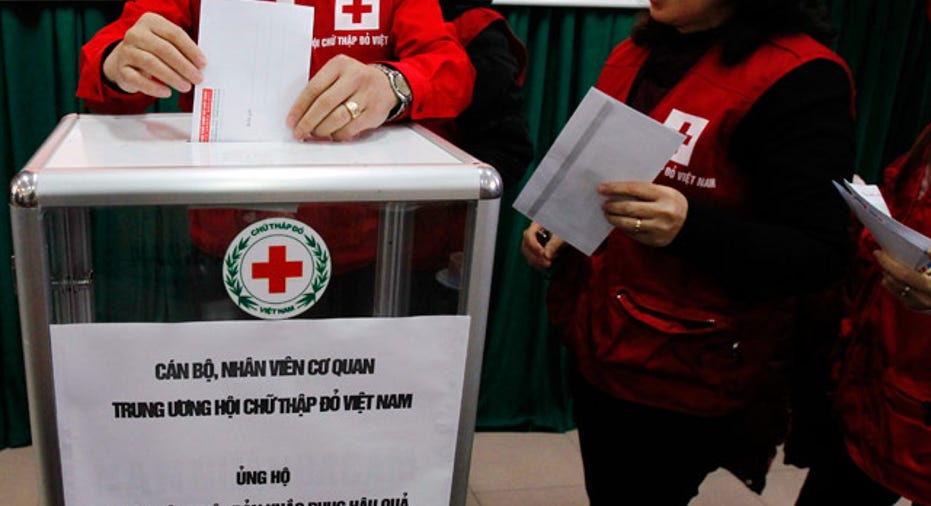The Disaster Supplies Every Household Needs

Disasters come in many forms and can strike virtually anywhere at any time. We all need to be ready for the worst, says Don Lauritzen, a spokesman for the American Red Cross.
"It's important for households to be prepared by taking three simple steps: get a kit, make a plan and be informed," he says. "Individuals and families should gather emergency supplies like food, water and other basic supplies that will last for three days."
Stock up on nonperishable food, water and emergency essentials before a storm approaches or other crisis comes. Last-minute shoppers will find long lines and depleted supplies. And after a disaster hits, trucks may not be able to make deliveries right away, and stores may be closed for several days.
The Federal Emergency Management Agency, or FEMA, says to consider using plastic storage containers or duffel bags to hold your emergency kit. Put the supplies in a place where you can grab them easily.
Food Tips for Your Emergency Kit
Forget anything that requires the stove, microwave or refrigerator because power outages are routine during and after natural disasters and can be lengthy. You want to stock up on items that can be eaten right out of the can, bag, box or bottle.
For post-storm cooking, use a chafing dish heated by a cooking fuel such as Sterno. Sporting goods or outdoors stores also sell a variety of propane-fueled stoves. A charcoal grill will be a godsend, but be sure to have briquettes, lighter fluid and matches. And obviously, don't use propane or grills inside the house.
FEMA recommends the following food supplies for your emergency kit:
- Canned meats, fruits, vegetables.
- Protein or fruit bars.
- Dry cereal or granola.
- Peanut butter.
- Nuts and dried fruit.
- Crackers.
- Canned juices.
- Nonperishable pasteurized milk.
- Vitamins.
- Baby formula or food (if you have a little one).
Try to avoid foods that could make you thirsty. Choose unsalted nuts and crackers, FEMA says.
And don't forget your pets' needs.
Water, Water
Figure on having at least one gallon per person per day, FEMA advises. You'll need more for kids, sick people and in hot weather. Also, note that some of the water is to drink, and some will be for bathing and flushing toilets. The two supplies aren't treated or stored in the same way.
- Drinking water: Stick with commercially bottled water because it's safest, FEMA says. Store it in a cool place. If you run out, the Red Cross says bleach can be used to purify questionable water supplies (using 16 drops per gallon), but there's a process to follow, and you might consider boiling water first. You also can buy water purification tablets at sporting goods stores.
- Bathing/flushing water: If a storm is approaching, fill buckets, coolers and the bathtub with tap water for washing and for use in toilets.
Other Supplies to Have on Hand
The American Red Cross and FEMA advise that you also think about the following for your emergency kit:
- Food prep: Manual can opener, plastic eating utensils, paper plates, napkins, garbage bags.
- Hygiene/comfort: Moist towelettes, toiletries, toilet paper, diapers, tampons or sanitary napkins, extra clothes, battery-operated fans (sold in outdoors stores), sleeping bags or blankets, entertainment items such as books and games.
- Health: Prescriptions, glasses, bug repellent.
- Safety: First-aid kit, flashlights, hand-crank or battery-operated radio, NOAA weather radio, batteries, matches in a waterproof container, fire extinguisher, air horn or whistle.
- Personal: Cash (remember, ATMs run on electricity), debit/credit cards, cellphones and chargers, laptop/notebook computer and charger/air card, insurance and financial information protected in a plastic bag, contact information to reach doctors, family members and friends in a disaster.
Copyright 2012, Bankrate Inc.



















